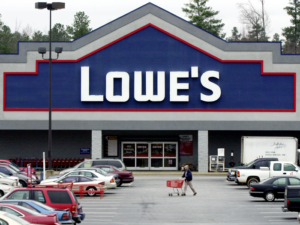“Problem recognition is an important part of the business. It helps with identifying and solving the most common problems that consumers face, like price sensitivity.”
Problem recognition is a term that has been used for decades in business, but it is still something that must be taught to new employees. There are three types of problem recognition: external, internal and operational. In this blog post, we will discuss the importance of problem recognition in business and the different types and strategies to help you recognize problems when they happen.
Jump Ahead To :
Problem Recognition Explained
Problem recognition is the ability to recognize a problem and define it as such. It’s important for marketers because they need this problem to solve or create one that needs solving. If you don’t know what problem your product solves, how will people find out about it? This problem should be relevant enough so that someone would want to buy whatever solution you’re selling over another brand. For example: if I’m marketing cleaning supplies, my problem could be dirty windows and doors – not just windows and doors! Often, we get too caught up with our problems when sales suffer because we didn’t think outside of ourselves while creating/selling our products.
There’s a saying which goes, “A problem well stated is a problem half solved.” The other half of the problem will be solved by your product – you have to find out what that problem is through research. This can be done in many ways, including surveys and focus groups. Once you know the specific problems people are having within this sector makes marketing so much easier because then you’re solving their pain points with your products or services! You don’t want to create awareness for something too generic like cleaning supplies when other brands sell better than yours target smaller markets (like window cleaner over all-purpose cleaner). That’s where the process gets hard but also very rewarding.
Importance Of Problem Recognition

Every marketing activity involves how marketers identify consumer problems that can be solved with their products. The Importance of Problem Recognition in marketing makes it possible to offer potential customers who need them. This article will explain why identifying customers’ issues should always be at the centre of any successful campaign.
When a company is considering a marketing campaign, one of the first steps they take is determining who their target market will be. They then research how these consumers live and what problems they face in their everyday lives.
Problem Recognition ensures every customer feels heard by marketers who are working hard on offering them relevant solutions.
Once a company has identified an issue that they feel is worth tackling, Problem Recognition enables them to determine whether or not their product can address this problem. For example: if someone were selling toothpaste and decided to launch a campaign about how bad breath could be eliminated by using it twice daily. Still, this toothpaste would cause people to have more bad breath. The Importance of Problem Recognition in marketing would ensure that this campaign will fail before it even begins.
Problem Recognition is what makes every marketer’s job easier because they can create successful campaigns by identifying issues that can be solved with their products.
By understanding what problems are occurring for customers (and potential customers), businesses can focus on developing products or services that address those issues specifically. This effort will ultimately engage consumers much more effectively than simply promoting a product without regard for whether or not it solves someone’s problem. Consumers respond well when they feel like their needs are being met, so focusing on identifying the exact nature of these needs generates much stronger engagement with your brand message overall. When there is no clear problem to solve, there is no clear value proposition.
The Importance of Problem Recognition in marketing can be further understood when looking at the traditional marketing funnel (also known as the consumer decision journey). This process consists of five stages: awareness, interest, desire, evaluation and purchase. The first four steps all revolve around recognizing a problem that someone may have before offering them an appealing solution; if this step is skipped over, then it’s very likely that sales will suffer down the line because potential buyers won’t see any reason to invest in your product or service. Suppose you try selling something without first understanding what kind of problem your customers are experiencing. In that case, you’re just going to end up wasting a lot of money on marketing campaigns that won’t be effective.
Using Problem Recognition is all about being able to anticipate people’s needs and desires better before they even realize them themselves; this requires market research and an ability to consider how things might play out in the future. With these tools at their disposal, marketers can create messages that resonate much more strongly with consumers than if they were trying to sell something without any idea why it was worth buying (or not buying). When there is no clear need for your product or service, it becomes more difficult to convince people that they need it.
Types Of Problem Recognition

There are several types of problem recognition in marketing. One type is the “recognition by consequences“. If a consumer’s displeasure about an issue becomes important, they will look for ways to solve it. The dissatisfaction might be due to something that happened with the purchase or use of a product, and they need help finding out what went wrong and how was it caused. Another example will be if there have been complaints from other consumers about certain problems associated with your business practices, such as making false claims on products you sell. This could also lead them to seek another company that provides better service and more value than yours does. This can become such a big problem that even before the customer decides not to do any future business with you, they will go to the media and spread bad word of mouth about your company. This is what we call Types of problem recognition in marketing!
A second type is Types of problem recognition by rejection or acceptance. The consumer may be offered a new product that requires them to make an active choice between it and another one they have been using for years now. In this case, Types of problem recognition can lead them to reject both products because they believe nothing could work and their present solution – after all, why would anyone want to change something that isn’t broken? The Types of problem recognition again come from the marketer who has not done enough research on his target audience’s current situation and needs and has not offered them a solution that addresses their issues.
Problem recognition in marketing is also done when the consumer believes yours is inferior to another product or service on offer. This can lead them to cancel their contract with your company without giving you time to remedy such situations. As Problem recognition grows, it may be expressed as an unwillingness by the customer for any interaction whatsoever with your brand, often leading them to boycott it completely! Problem recognition do more than just put off potential customers from doing business with companies; Problem recognition can even force people out of a job if enough consumers suddenly stop buying a certain type of good or service—types of problem recognition about its safety, effectiveness or quality. Types of problem recognition in marketing can be about anything; for example, the customer may not like your company’s business ethics and refuse to do any further Types of problem recognition with you!
Problem recognition is a very serious issue that must always be kept under control by marketers who want their brands to succeed. It can lead them into seriously hurting their own companies’ financial records and those working at all levels within it and should never be taken lightly or left unattended to. Types of problem recognition should also motivate marketers to go out there and research what consumers need. If they don’t know this information already, Types of problem recognition will become great problems that could affect many people involved (customer, company’s employees and shareholders). Therefore, types of problem recognition should be constantly monitored by a team that uses this information to develop products or services that can solve these problems.
Types of problem recognition are very important in marketing because they could lead customers to believe your product/service does not address their issues at all! This means they will choose the competition over yours – even if you are selling an inferior product! Problem recognition usually comes from false claims about how effective your product is, which may result in unsatisfied consumers taking legal action against you. Especially when it comes to pharmaceuticals where Problem recognition has a serious impact on both companies involved (drug manufacturers and pharmacies) and problem recognition (people buying the drug and people who would not want to take it for fear that they might experience Problem recognition with its safety).
Consumers Behaviour In Problem Recognition
As a result of the consumer’s inability to recognize a problem, most salespeople tend not to focus on product features. To avoid this scenario and ensure that you are discussing relevant information with your customers, you must identify their needs/problems to address them accordingly. Consumer behaviour has been defined as “the study of individuals, groups, or organizations and the processes they use to select, secure, use, and dispose of products, services, experiences or ideas from which they expect satisfaction”.
Many kinds of research have found consumer choices
to be rational decisions based upon an analysis of benefits received over costs incurred. In other words, consumers will try hard before making a purchase decision because buying something means giving up money that could have been spent on something else.
Certain factors influence consumer decisions that can be classified into two major groups: internal and external. Internal influences include the consumer’s characteristics, needs, and motives, while externals rely upon situational variables such as social influence, reference prices (experience), availability, quality perception/credibility, etc.
Examples Of Problem Recognition

The Examples of problem recognition in marketing is all around us. Marketers rely on correct results to make the best decisions possible about their products, services or missions. We even need accurate statistics for government agencies and companies that may one day affect our lives, like medicine safety issues related to prescription drugs. Even clothing can be included since inaccurate sizes would lead to poor fit, customer dissatisfaction and ultimately bad purchases (McKee).
There are many different types of problem situations within marketing; however, there are several key examples: poor customer experience, lack of consideration among competitors’ products, issues surrounding pricing strategy, and ineffective advertising campaigns. Each situation could provide a potential solution if recognized correctly by business owners – this means taking action before it’s too late! For example, one issue may have been caused due to lacklustre branding, so improving your corporate image would help improve customer awareness, thus creating more demand.
In Conclusion
To create a successful marketing campaign, marketers need to be able to recognize and define problems. Without the ability to do so, there would be no way for them to know what problem their product solves or how they can solve existing issues that are not being solved by other products on the market. This skill set may seem simple, but in truth, it’s one of the most valuable skillsets you could have if you’re working in digital marketing. If your company needs help recognizing problems with its current approach or identifying new ones that need solving, don’t hesitate to contact us today! We offer services ranging from SEO consulting through full-service PPC management programs – whatever your business needs, we’ve got you






